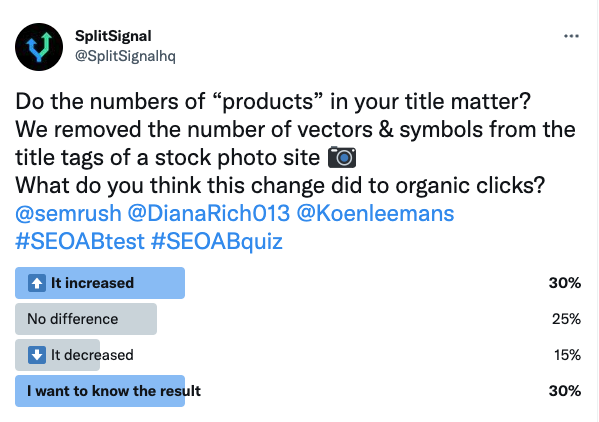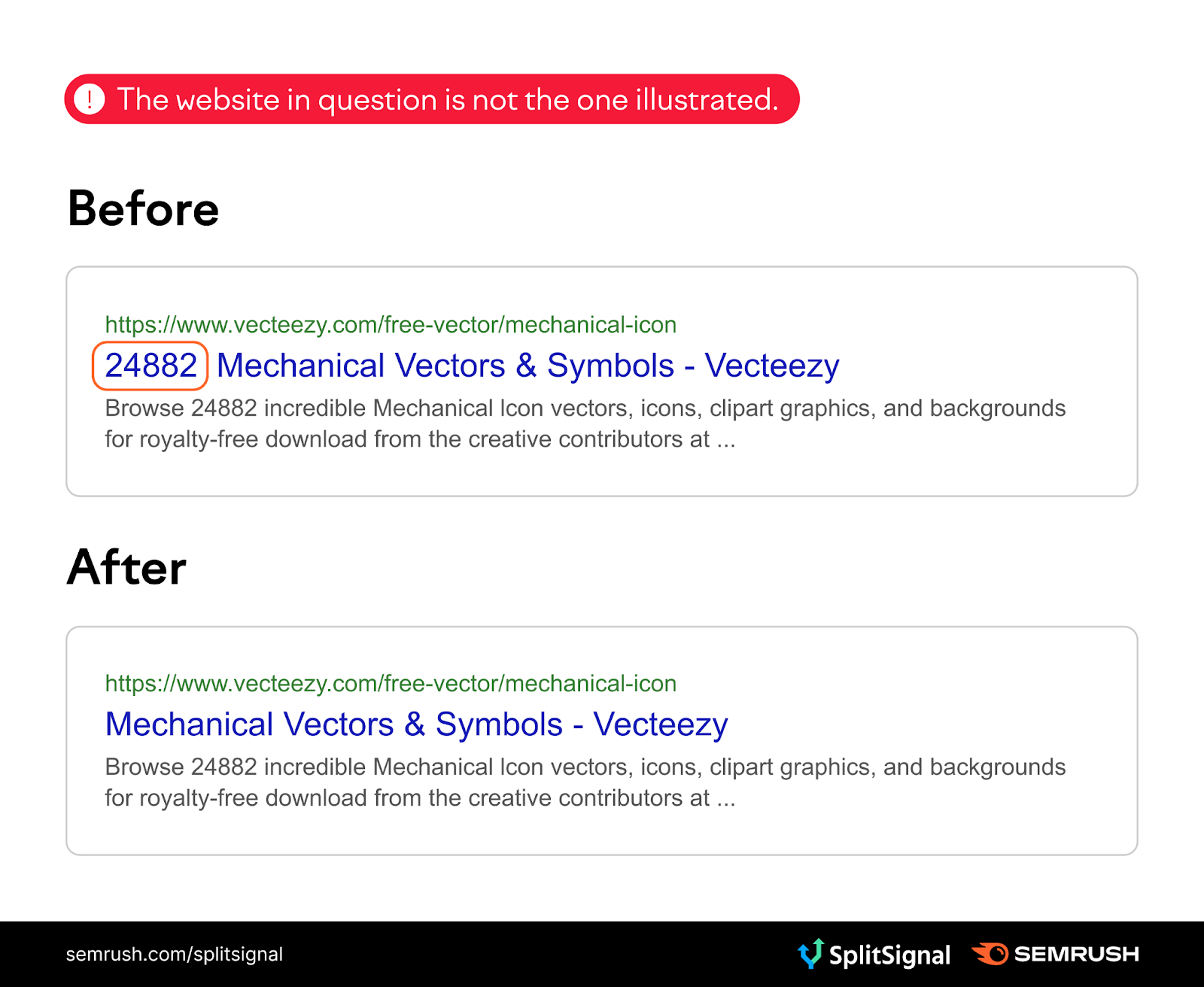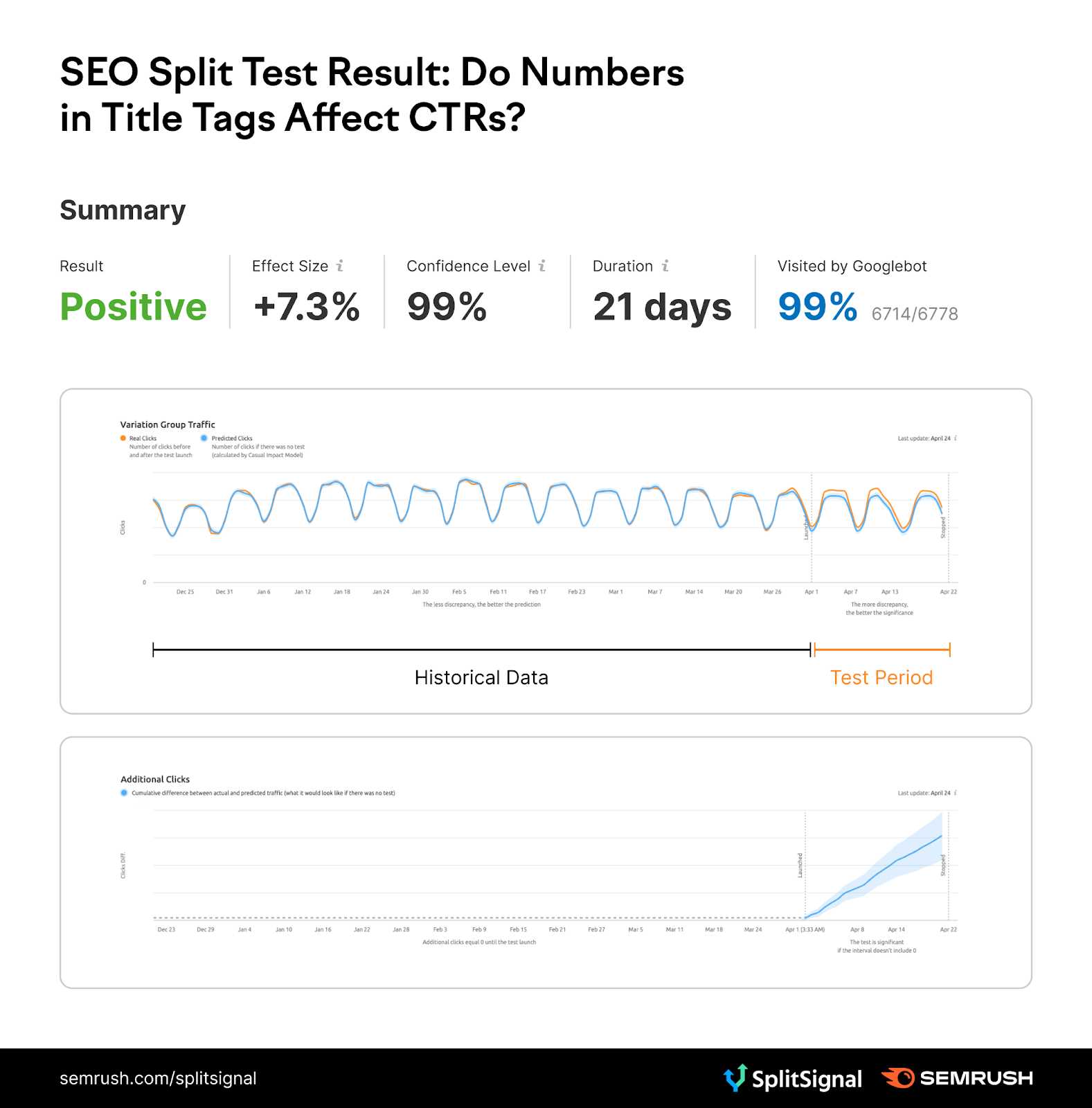Before you start: what do you know about SEO split-testing? If you’re unfamiliar with the principles of statistical SEO split-testing and how SplitSignal works, we suggest you start here or request a demo.
Have you ever wondered how the numbers in some of your title tags affect search performance?
Yes, us too, and we’ve investigated with an SEO split-test of click-through rates (CTRs) to find the answers for you.
To kick things off in our usual fashion, we reached out on social media to gather our community’s expectations for an experiment that put thousands of heading tags to the test. We planned to remove numbers from half of the title tags in question and compare results to the ones that retained them. Our poll aimed to discover what kinds of results were expected—here’s how it went on Twitter:

Uroš Stanimirović, Content Writer & Editor at Brid.TV:
My guess would be that it would depend on the numbers.
I think that high numbers will prove off-putting to the consumer and will bring no value to the SERPs. Smaller, more relevant numbers could see a CTR increase.
But if I had to place one overall guess, I'd say nothing would change (at least not substantially enough).
Sean Majer, Chief Operating Officer at VeteranPCS:
I would guess that organic traffic increased after removing the number of products available. In m opinion, large numbers can be overwhelming to consumers which causes them to prefer a website that doesn't specify how many of something they have.
What do you think? Are the results in line with your expectations, too?
Let’s dive into the study and its results to see how close to the mark the votes were in this poll:
The Hypothesis
The target site in question for our CTR split-test was a large website that specializes in sales of icons and stickers. This is the original title tag setup it was using for all category pages:

The structure seems to make perfect sense, right? It targets relevant keywords, and it gives the searchers everything they need to understand what the page is about, but is the use of numbers unnecessary here? Moreover, do they actually have a negative impact on SEO performance if they are used at the start of a title tag?
That was our hypothesis—our method was to use the power of SplitSignal to test it with 14,000 pages from the chosen website. The tool’s cross-site editing function meant we could quickly remove the potentially unnecessary numbers from ~7,000 of those pages (in only two minutes, in fact) and test them against the ~7,000 that still included them.
Would the removal of numbers from title tags affect the number of organic clicks they received? Let’s find out…
The Results
Having run the test for three weeks, we found that the removal of the numbers had a statistically significant positive effect on the organic clicks on the title tags in the variant group. Those who voted for a positive change in our Twitter poll were correct, after all.

For this website, at least, the act of removing unnecessary numbers from the title tag brought about an increase in organic clicks of 7.3% in only three weeks. This was with a test confidence level of 99%.
Understanding the results
While the change we made here was simple, the reasons behind the effects can be complicated.
In simple SEO terms, the change shouldn’t really make that much difference. Of course, it moves the keyword closer to the beginning of the title (which is something we will test in the future), but there is no certainty that this modification alone can bring you results like these.
The positive uplift in clicks might be down to the fact that the SERPs look a little ‘cleaner’ and perhaps more attractive without the numbers, but it’s difficult to tell that for sure here.
Indeed, a short and simple title is not always the ideal approach—our title tags should be focused on providing as much relevant information as possible for users, and they absolutely shouldn’t be written purely for search engines.
We have conducted multiple studies that have proved the importance of tag optimization, including one that looked at the inclusion of additional keywords in short title tags. These kinds of techniques can allow you to resonate more with your target searchers and, of course, increase your organic traffic as a result if you get the targeting right.
Be sure to use these results to think carefully about the optimization of your title tags—prioritize the creation of unique titles that include only relevant information for your target audience. Sometimes, numbers will be necessary, but for other pages, they might not—you can use a tool like SplitSignal to put them to the test across your whole website.
Consider the combination of SEO factors that determine your organic rankings, and don’t expect individual changes like the ones in this test to dramatically affect performance. Sure, it might have a big impact in the end, but try dipping your toes first instead of diving in at the deep end. The same tactic will never affect every site in exactly the same way.
With SplitSignal, you can test these tweaks and make changes across your whole website when you’re ready, tracking performance along the way. The best bit? If the results of the changes aren’t what you expected, you can reverse them as quickly as you made them.
Get in touch with the SplitSignal team today to request a demo.
